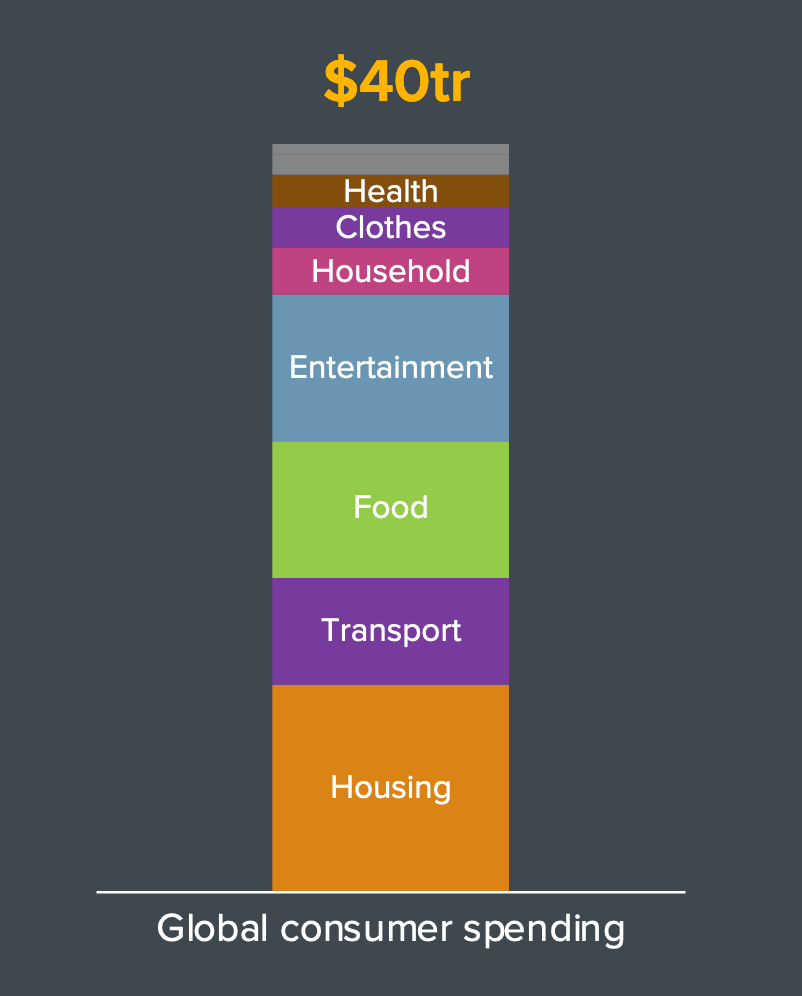We love to shop, even those who hate it have to do it, be it shopping for groceries, cosmetics, clothes, mobile, electronics or some other item in millions that are sold. This is evident from the fact that more than 60% of world’s GDP is consumption based (It has to be otherwise what is the point of making things if no one is going to consume them, even the rest of the expenditure i.e. infrastructure etc is to make this possible). Here is how we spend our money -

But this graph misses the nature and nuance of shopping or as they say, the devil lies in the details. How we buy a particular item depends a lot on its nature like its position on the need-want continuum, ticket size, frequency of purchase (inversely correlated to shelf life), experiential purchase, etc. This is the reason there are more than 1 retailers and more than 1 e-commerce player even though both of them are scale businesses. They cannot cover all the nuances of all the items that have to be sold. Here are some of the nuances-
Shelf life (from Milk on one end to Electronics like Refrigerator/Washing Machine on other hand).
An extreme example that we can fit here is food delivery, very limited shelf life and thus a very different business.
Milkbasket in India is a good example of this. Using a highly perishable item (milk), they were able to get a foothold in the highly competitive space of grocery delivery.
Frequency of purchase (correlated with Shelf life).
Experiential (like expensive watch, perfumes etc)
Ticket size (somewhat correlated to experiential given that we prefer to try before buying an expensive item)
Another aspect as pointed out by Benedict Evans here is whether we know what we want to buy vs we are exploring. Amazon is the default choice when we want to buy something we already know.
Position of the item on the need-want continuum. (this matters because the kind of message we want to communicate changes with this. If it is a need all we want to change is users’ buying behaviour but in the latter case, we need to instil a new desire in users, a way harder thing to achieve)
I am sure there would be hundreds of such factors, each having a varying degree of importance across industries, countries, age etc. The thought that I find interesting is as consumers, do we really think about these? Yes, I knew that milk is highly perishable and that I need to buy it everyday but did I ever think about the supply chain repercussions of the same? Or because it is such a need based product that the margins are really really low (similar to petrol/diesel)?
These are some of the implications on the market that come from the basic nature of the product. Now think what if something removes that limitation like homogenisation. The kind of effect it has on the whole ecosystem is mind boggling. Amazon is an example of such change. It basically removed the limitation of need of physical presence to sell products and we all can see the effects of it (of course having a great idea and building a growing business are two different aspects. Milkbasket even though had a great idea, is finding it difficult to grow as the landscape is very competitive and it has no defensibility. We will cover defensibility in another blog as it is a big topic to talk about here).
I think it is all about having that epiphany of some assumed limitation which changes things and creates new startups. Hope you find yours too :)



